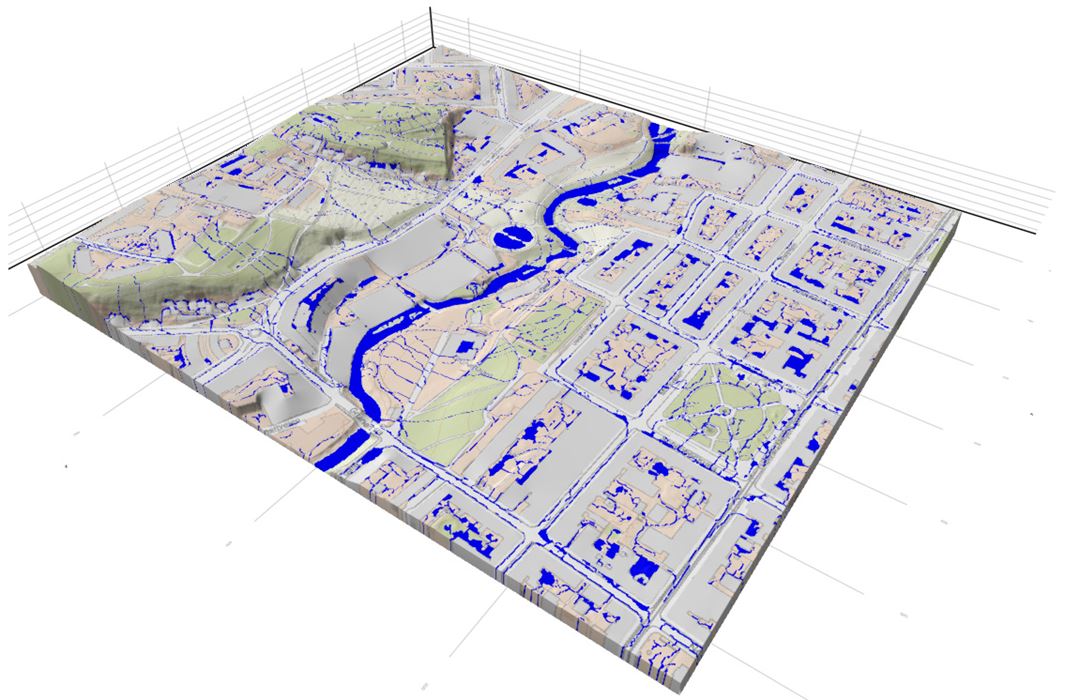Extreme weather insurance
The 2022/2023 period demonstrated the importance of being able to handle extreme weather. Floods, both nationally and internationally, caused significant damage to infrastructure, with massive projected insurance payouts. The storm Hans in 2023 reminded us all that Norway is also vulnerable in the face of natural forces. Flood protection and associated predictive simulators for flooding and stormwater, resulting from both cloudbursts and floods, will become important in dealing with more extreme weather in the future.
Stormwater modeling and prediction
Within what now constitutes the research group Applied Computational Science, there has been significant activity over several years in stormwater modeling and prediction. These activities can be divided into two simulation paradigms:
- Static modeling based on analysis of topography/terrain.
- Dynamic modeling based on the solution of the shallow water equations (SWE).
Within both of these paradigms, we have long experience and expertise and have built up an extensive internal code base.
Optimization of parameters, flood barriers and sensitivity analysis
In SWAMP, we aim to realize our knowledge in stormwater simulation in the form of open-source code for both static and dynamic modeling. A first version of SWIM for static and simplified dynamic modeling is already published online on GitHub (see documentation for example use), while updated software for dynamic modeling based on shallow-water equations is under development. We plan to combine these two paradigms to get the best of both worlds, and design the code to support automatic derivation, so that the simulation tools can be used for optimizing parameters and flood barriers, as well as for sensitivity analysis.

